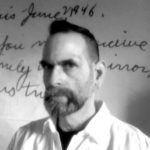By Avram Finkelstein, author of After Silence: A History of AIDS through Its Images

Home. It’s a leitmotif that underpins every conversation about COVID-19, and a word used with escalating frequency. It implies acceptance and safety. Home, however, has a different set of implications for queer people, who are frequently estranged by familial homophobia.
The phrase “social distancing” also overlooks layers of historical meaning for queer individuals. Our conceptualization of public spaces is freighted, as places where we might meet others like us, where we can congregate in relative safety, explore our identities, be guided by cultural congruence, and structure alternative communities to act as counterweights. Public spaces are essential to queer survival, in ways that evoke centuries of meaning. The “queer commons” is a microclimate of commonalities.
The question of whether AIDS and COVID-19 are comparable, is a question with many answers. Placing aside differences in rapidity of transmission and universality, both pandemics have been molded by institutional lies, intentional neglect and political subtext. The American agencies responsible for disease surveillance and drug research and approval remain institutionally entrenched, and mass graves of COVID-19 patients have being excavated on Hart Island in New York, where the bodies of the AIDS dead were buried when their families didn’t/wouldn’t/couldn’t claim them.
I have lived through wars and riots, and seen the American National Guard gun down students at Kent State, and erect emergency COVID-19 hospitals overnight. I’m now on my second pandemic, one that is in the process of laying bare–once again–the frailties of capitalism, science, government, community, political agency, relationships, risk, pedagogy, art, work, globalism, security, and home. If you are queer, this moment in our history is triggering, to say the least.
